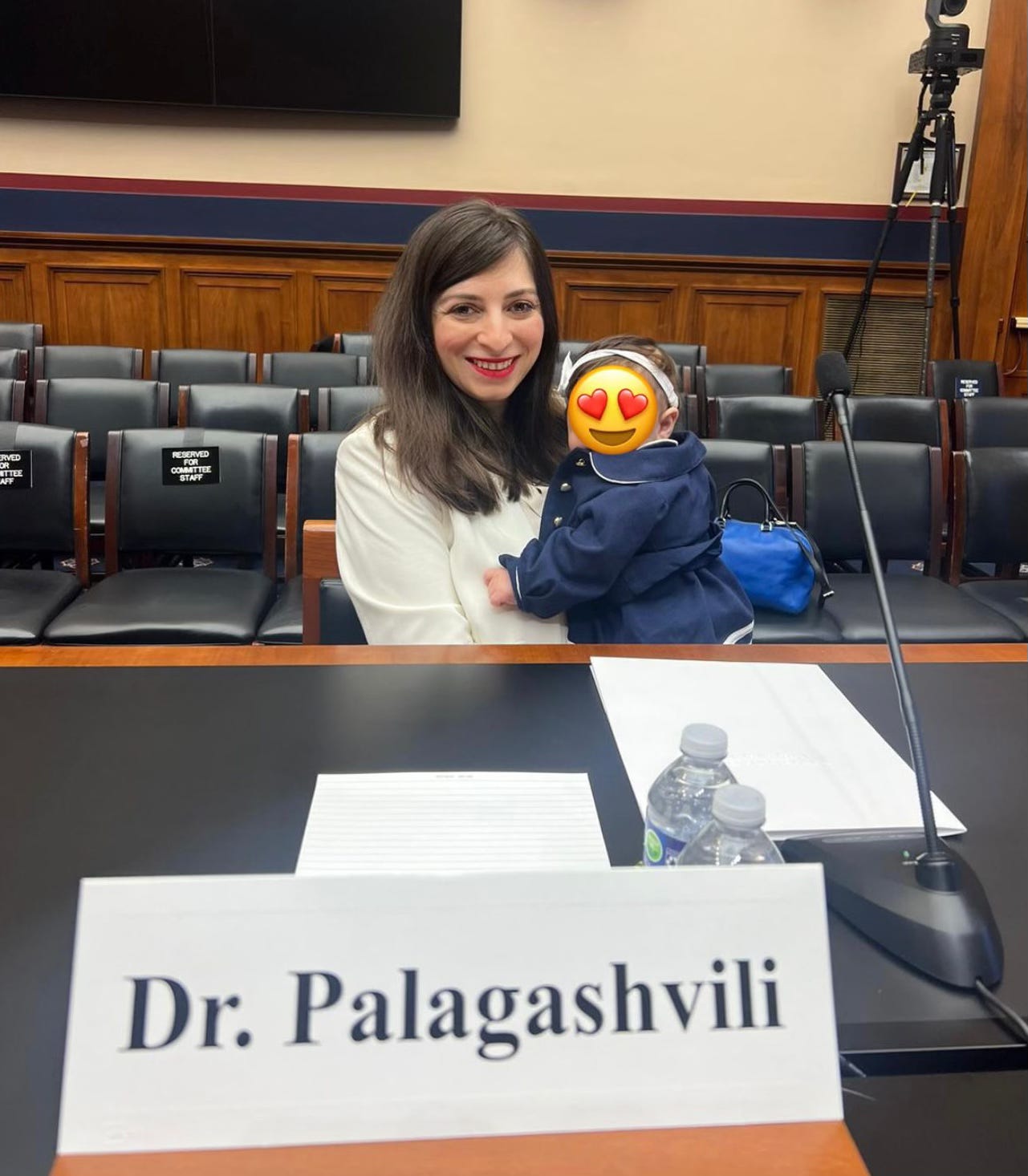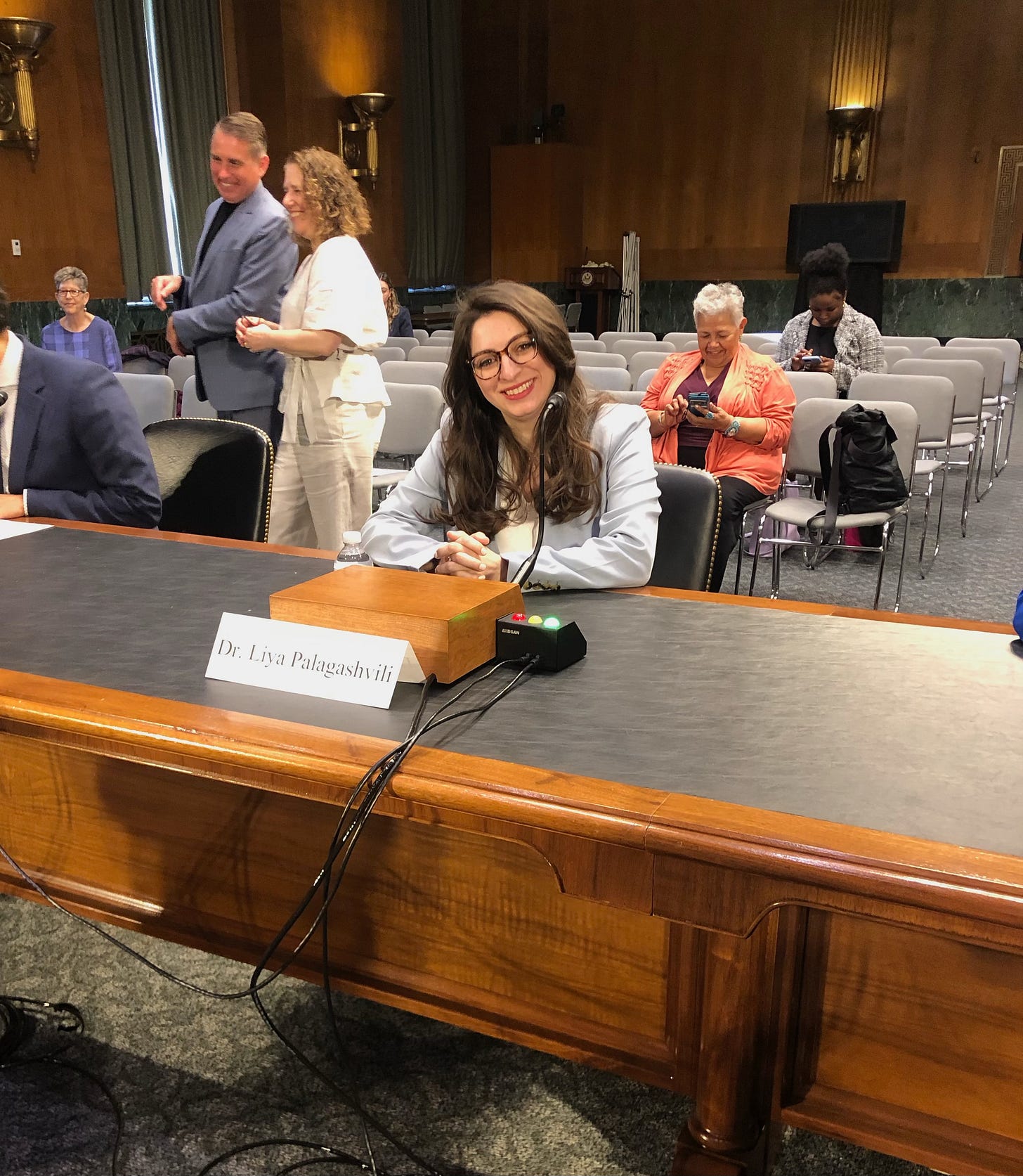The Portable Benefits Revolution: How Did We Get Here?
Senator Bill Cassidy just put flexible benefits on the map. This is the story of how a niche policy idea climbed to the top of the Congressional agenda.
A Personal Mission Reaches Capitol Hill
For the past several years, I’ve educated policymakers to highlight a major flaw in our labor system: benefits are tightly tied to W-2 employment, leaving millions of self-employed and independent workers without access to these benefits. Through my research and briefings, I’ve outlined a set of reforms to modernize this outdated model—one of the most important being the need to decouple benefits from employment classification. This would allow companies to offer benefits voluntarily, without the legal risk of misclassification.
At the time, these proposals were viewed as too niche to gain widespread attention. But now they’ve moved to center stage.
In a remarkable shift, Senator Bill Cassidy, Chair of the Senate HELP Committee just released a white paper that directly addresses the need for portable benefits. His report reflects many of the core recommendations I’ve advanced in my work. Earlier this year, Rep. Kevin Kiley introduced a bill in the House that reinforces these same principles at the federal level.
At the state level, momentum is growing too. Utah, Tennessee, and Alabama have all enacted legislation to clear the path for portable benefits. In Pennsylvania and Georgia, governors have approved pilot programs that allow companies to offer benefits to independent workers without triggering reclassification rules.
Put simply, a once-obscure policy idea has entered the national spotlight—and it’s just getting started.
The First Briefing: Planting the Seed
I held my first portable benefits lecture on the Hill on February 27, 2020. At the time, I had just finished the first draft of my study on “Barriers to Portable Benefits Solutions for Gig Economy Workers,” and I was eager to educate policymakers about how our current laws restrict the voluntary flow of benefits to independent and self-employed workers — and also how our tax laws promote W-2 employees while discouraging self-employment and entrepreneurship.

My pitch was simple: our laws create legal barriers that block independent workers from accessing voluntary benefits. If a company or individual provides benefits to a freelancer, that act alone could trigger reclassification as a W-2 employee. The result? The hiring party risks being liable for back taxes, benefits, and penalties—so most simply won’t take the chance. It’s a system that unintentionally penalizes the flexible workforce. Indeed, 80 percent of independent workers want to remain in those arrangements (as opposed to being W-2 employees), and instead the vast majority of them have indicated they desire portable benefits.
The first step toward fixing this is just as simple: legalize access to benefits. Federal law should make clear that the presence of benefits cannot be used to determine a worker’s classification status.
That’s exactly what Rep. Kevin Kiley’s Modern Worker Security Act now proposes. But when I first started sharing my research and these ideas with policymakers, they landed with silence. No follow-up questions. No interest. Of course, the pandemic soon took over everyone’s attention—but the conversation was quiet even before that.
Still, my team kept up the educational efforts—meeting with congressional offices, writing op-eds, and making the case for reform wherever we could.
By 2022, we decided to broaden our efforts to the state level—and that’s when the breakthrough came.
Shifting to the States: The Utah Breakthrough
While there was little movement at the federal level, a different kind of momentum was building in the states. In November 2020, California voters passed Proposition 22, a mandatory portable benefits framework limited to app-based transportation and delivery workers. It established that these workers would remain independent contractors, but required companies to provide a menu of benefits. In 2022, Washington state followed with a similar law, also mandatory and restricted to gig transportation platforms.
This was a different approach from the voluntary framework I had outlined in my original study. The California and Washington models were:
Mandatory,
Defined the specific ‘menu of benefits to be provided,’ and
Limited to app-based transportation and delivery companies.
Still, even as the mandatory bills advanced, we continued educating policymakers and the general public about the benefits of a voluntary, flexible approach—one that could apply across industries and support all types of independent workers.
In a key policy brief for lawmakers, Flexible Benefits for a Flexible Workforce, I emphasized that while federal action could unlock even broader reform, states could take the lead by clarifying that the presence of benefits cannot be used in determining employment classification. The brief also outlined three guiding principles to help shape early portable benefits efforts:
Voluntary participation for all parties
Multiple funding sources—including clients, companies, and the workers themselves
Portability, so benefits move with the worker, not the job
Then came the Utah breakthrough.
In mid-2022, Caden Rosenbaum of the Libertas Institute reached out after reading my study on barriers to portable benefits. He wanted to bring these ideas to Utah. Caden shared the policy framework with Utah lawmakers, and shortly after, Senator John Johnson introduced the first voluntary portable benefits bill in the country. The bill stipulated that the presence of benefits could not be used to determine a worker’s classification status. I was invited to testify before the committee on the bill, which passed unanimously out of the Senate committee.
Just a few days later, it cleared the full Utah Legislature with little opposition.
On March 23, 2023, Governor Spencer Cox signed the Utah Portable Benefits bill into law. I wrote an op-ed in the Salt Lake Tribune explaining what the law means for the future of flexible work.
And just like that, the portable benefits reform idea moved from theory to reality—with Utah leading the way.
Proof of Concept: Stride as Portable Benefits Provider
A crucial component of the portable benefits model is the presence of a third-party provider—one that can manage benefits accounts independently of any single employer, ensuring the benefits are truly portable and tied to the worker, not the job.
When Utah passed its portable benefits law, Stride, a California-based company, became the first to operationalize the model as envisioned: acting as the third-party facilitator that keeps benefits with the worker, regardless of whom they’re contracting with.
Founded in 2013, Stride partners with major platform companies like Uber and DoorDash and helps self-employed individuals, gig workers, and part-time employees navigate access to benefits like health coverage and tax deductions.
So within a year of the Utah law taking effect, Shipt (a Target-owned delivery platform) launched a portable benefits pilot for drivers in the state, with Stride facilitating the program. Six months later, Lyft announced its own pilot, contributing 7% of driver earnings into individual accounts to help workers pay for health coverage, retirement savings, or time off.
The model quickly began spreading to other states.
In Pennsylvania, with the backing of Governor Josh Shapiro, DoorDash rolled out a pilot portable benefits program, again facilitated by Stride. Positive results from that program helped pave the way for expansion. Next came Georgia, where Governor Brian Kemp approved a similar pilot, also powered by Stride.
As this momentum built at the state level, federal policymakers began paying closer attention—seeking to understand how portable benefits could be scaled nationally and what kind of legal clarity would be needed to support such innovation.
The Portable Benefits Future Arrives: Congress Take Notice
By 2023, portable benefits were no longer a niche policy idea—they were gaining traction on Capitol Hill–several key think-tanks and individuals joined our efforts and proved to be pivotal to growing the movement.
That year, I did almost two dozen congressional lectures and briefings on portable benefits reforms. This time, the response was different: staffers and members were engaged, asking follow-up questions and requesting additional research and policy resources. The federal momentum had finally begun.
In April 2023, I was invited to provide expert testimony on independent work before both the Senate Aging Committee and the House Education & Workforce Committee. These hearings marked a turning point in how seriously Congress was beginning to consider portable benefits.

Exactly one year later, in April 2024, the House Education & Labor Committee invited me back—this time specifically to testify on portable benefits. They wanted to explore how federal policy could support the kinds of models being tested at the state level.
Here were the three big takeaways from my testimony:
Independent workers' lives would be significantly improved if they had access to benefits.
States are already experimenting with various portable benefits approaches, giving workers more options than the outdated choice between rigid employment or total flexibility without support.
Federal policy can play a key enabling role by creating a safe harbor—clarifying that providing benefits should not be a part of the worker’s classification determination.
As a personal note: I brought my four-month-old baby with me to that April 2024 testimony—the same room where I testified one year earlier while pregnant with her –– life in full circle!

By June 2024, Senator Bill Cassidy issued a formal Request for Information on portable benefits—a clear signal that Congress was actively exploring legislative options. My response laid out key recommendations and design considerations.
A few months later, I published—along with my co-author Jonathan Wolfson—a Federal Policy Guide and State Policy Guide on portable benefits, bringing together years of research and lessons from state experiments. Since then, I’ve continued informing lawmakers across the country with my research on independent workforce and portable benefits.
Where We Stand Now: A Bipartisan Future for Portable Benefits
A large part of the reason why there is so much interest in portable benefits reform is because it’s a truly bipartisan idea. It allows properly classified independent workers to access benefits without increasing misclassification and without reducing traditional W-2 employment, as shown in our analysis of Utah’s portable benefits law.
Center-left groups have long supported this approach. The Progressive Policy Institute published a study arguing for removing the presence of benefits from the worker classification determination. The Brookings Institution published this report on portable benefits last week, and a year earlier, they published Economist Jonathan Gruber’s portable benefits proposal. A 2015 Brookings report on modernizing labor laws—alongside earlier work by the Aspen Institute—helped inspire my own research in this space.
At the same time, right-of-center organizations are also supporting these reforms. The Independent Women’s Forum published a policy focus on portable benefits, as did Americans for Prosperity, emphasizing the importance of flexibility and choice in how workers access economic security.
On the legislative side, Democrats Senator Mark Warner (VA) and Representative Suzan DelBene (WA), along with Republican Senator Todd Young (IN), introduced a bill to grant $200 million to states and localities to pilot portable benefits models. While the bill doesn’t directly address the core legal barriers, it supports the broader movement toward portable benefits.
The takeaway is clear: portable benefits enjoy support from across the political spectrum—a rare thing in today’s policy landscape.
What’s Next?
My motto: The Future of Work is Flexible Benefits for a Flexible Workforce. At its core, the portable benefits reform movement recognizes a simple truth: current policies force workers to choose between flexibility and benefits. Flexible and portable benefits aim to bridge that gap—so that true independent workers and self-employed individuals can access benefits without being forced into a traditional employment structure.
This is a common-sense, non-partisan solution, and I expect we’ll continue to see growing interest from scholars, organizations, and lawmakers across the country.
At the state level, both Alabama and Tennessee passed portable benefits bills last month, joining Utah in leading the way on voluntary reform. Several other states are now showing interest in similar legislation. And at the federal level, given Senator Cassidy’s recent white paper and growing momentum, it’s very possible that federal legislation may be on the horizon.
For anyone new to these ideas, additional resources are below.
Additional Resources
Independent Work and the Gig Economy: The Basics
My long-form study for American Enterprise Institute unpacking independent work data and policy reforms
Addressing the Real Challenges for Independent Contractors and the Gig Economy
Women as Independent Workers
Portable Benefits Reforms
Policy Brief: Flexible Benefits for a Flexible Workforce
Designing Benefits for Platform Workers (Jonathan Gruber)
Federal Policy Guide on Portable Benefits
State Policy Guide on Portable Benefits
Congressional testimony (April 2024)
Massachusetts testimony (March 2024)
Utah testimony (February 2023)
Independent Work Reclassification Policies







Advocacy is real work. Thank you for all your efforts!